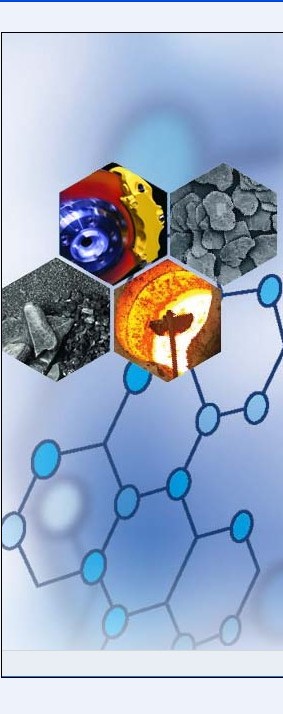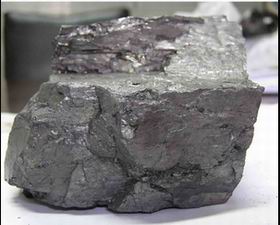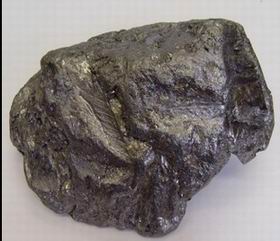Amorphous Graphite

The term �amorphous graphite� is a contradiction in terms All graphite is crystalline by definition, therefore it is impossible for graphite to be amorphous. However, the term was applied due the anhedral (no visible crystallinity) morphology of this form of graphite. To the untrained eye a piece of amorphous graphite simply looks amorphous�, like a lump of anthracite coal. However, it is much denser than anthracite, 2.2g/cc vs. 1.7g/cc, and is soft and lubricious. A much better descriptive term for this substance would be �microcrystalline graphite� or �cryptocrystalline graphite�. Both of these geological terms are used to describe a mineral which is composed of crystals so small that they cannot be resolved with either the naked eye or through standard optical microscopy techniques. However, the material is not glassy, there are crystals present. A good analogy to more common mineral specie would be the microcrystalline form of quartz known as chert. Amorphous graphite is to flake graphite and vein graphite as chert is to crystal quartz. The photo, below right, is a polarized light micrograph of amorphous graphite showing a mineral inclusion in the fine grain amorphous graphite background mass
Amorphous Graphite:


Amorphous graphite is a seam mineral, not to be confused with a vein mineral. It is formed by the metamorphism of previously existing anthracite coal seams. Proto-coal organic carbon is deposited and converted into anthracite coal followed by low grade metamorphism of the coal. This results in the formation of microcrystalline graphite. Regions where this process occurs may consist of zones where anthracite deposits occur adjacent to graphite deposits. This phenomenon is indicative of localized metamorphism or contact metamorphism.
 metamorphosed A good example of this type of graphite formation is the amorphous graphite deposits of Sonora, Mexico. In these deposits the graphite affecting agent has been identified as swarms of dikes that intruded the area.
metamorphosed A good example of this type of graphite formation is the amorphous graphite deposits of Sonora, Mexico. In these deposits the graphite affecting agent has been identified as swarms of dikes that intruded the area.Dikes are intrusions of magma that are tabular in shape, and cut across the structure of the country rocks. The illustration is a schematic of such a contact between a coal seam and its intruded dike. Although the coal bed illustrated is shown �parallel� to the local bedding, most if not all anthracite seams occur in folded strata, which are indicative of the semi-metamorphic nature of this variety of coal.
Note that the formation of amorphous graphite is not limited to the contact metamorphism agent only. Regional metamorphism may occur as when a large intrusion such a batholith or stockintrudes beneath or adjacent to structures containing the right type of precursor carbon.
Seam graphite is typically higher in ashthan other forms of natural graphite. Since the proto-carbon is deposited contemporaneously with other mineral matter that flows into swamps, bogs, deltas, and other �coal producing� environments. Since the �system� is more or less closed to the exchange of mass with the country rock, the mineral matter (ash) that was present in the coal remains in the graphite. This mineral matter may be either �free�, i.e., �mechanically� attached particulates such as quartz, or may consist of clay-like minerals that are intimately associated with the carbon.
The development of long range crystallographic order requires that some degree of pre-crystalline order be present in the proto-carbon, and that the energy supplied to this carbon be sufficient to promote graphitization. In the case of amorphous graphite it is apparent that only minimal pre-ordering of proto-crystallographic domains occurred.
Amorphous graphite is extracted using conventional coal-type mining techniques. Most of the current supply of amorphous graphite available in the United States is imported from Mexico and China. Previously other sources included Korea, Italy, and Rhode Island USA. Amorphous graphite is typically lower in purity than other natural graphite. This is due to the intimate contact between the graphite �micro crystals� and the mineral ash with which it is associated. This close graphite/ash association makes floatation and other density and chemical based separation techniques inefficient if not impossible. Commercial grades of amorphous graphite are available from 75-85% purity in particle sizes from 4-inch lumps to 3-micrometer powder.
Amorphous graphite tends to be much less reflective in both large a small grained sizes. Therefore, it has a darker color, bordering on black, while other natural graphite has a color closer to �silver-gray�. This makes amorphous graphite useful in coatings and other products, which require less reflectance. Also, this graphite variety is typically lower in cost than other types but is still lubricious, conductive, and chemically stable.
Amorphous graphite is used in many lubricant products especially greases, forging lubricants, etc. In applications where higher ash contents are acceptable or preferred this type of graphite is a good choice.
Certain applications such as mechanical seals require a certain degree of rubbing abrasion to provide the necessary �lapping� or cleaning of opposing rubbing surfaces. The ash content of amorphous graphite can provide the right balance of gentle abrasion required to perform this function. By selecting a properly sized amorphous graphite powder the user can control the size of the ash.
![]()
COPYRIGHT 2008-2013 Chenzhou Top Graphite Company Limited
